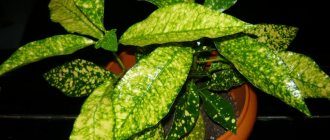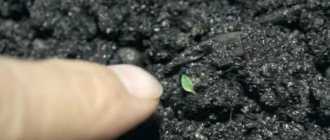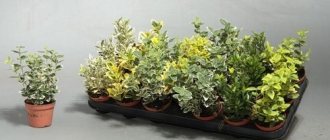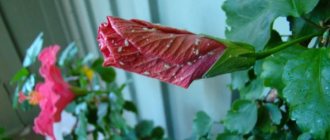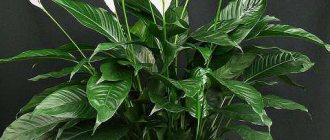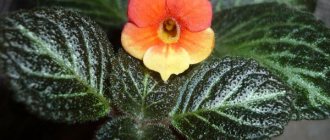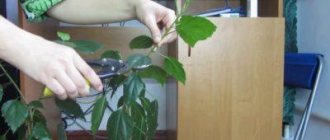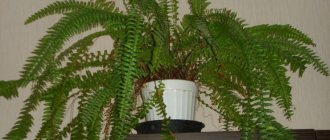Many gardeners have long loved the small-leaved elm. It grows well, forming dense thickets, and does not require scrupulous care. The only thing that small-leaved elm definitely needs is a lot of space, since as it grows it crushes large areas. For this reason, it is not recommended to plant fruit trees near it. They will simply be cramped.
The tree tolerates pruning well, so it is often used to form bonsai. Its undoubted advantage is its elegant glossy foliage.
Species diversity
Elms have been cultivated for a very long time; based on some species, many varieties and hybrids have been developed that are widely used in landscaping city streets and public gardens.
V. small-leaved (lat. U. parvifolia) and V. squat (lat. U. pumila) in some places are called elmovik (sometimes elm). In the natural environment, the species is widespread in the northern regions of China, Kazakhstan, Western Siberia, Mongolia, and India. It is cultivated in European countries, Canada and the USA. V. squat grows up to 25 m, V. small-leaved lower - up to 15 m. The leaves of both species are small - up to 8 cm long, oval with pointed tips. From the bark of these trees a fiber similar to hemp is obtained. Elm loves bright places and is not picky about the composition of the soil and its moisture. The trees tolerate replanting and pruning well. In addition, they do not have root shoots, which makes the species valuable for decorative use. There are varieties, for example, 'Celer', which are excellent for creating hedges.
Camperdown elm in a Brooklyn park (U. glabra 'Camperdownii')
V. small (lat. U. minor) or birch bark - this species, like the previous two, is called elm. The trees are distinguished by their relatively short growth (up to 10 m) and low-lying crown. You can often see cork growths on branches, which add value to the wood. In its natural environment it grows in Ukraine, Asia Minor, Western Europe and the southern regions of Russia. It differs from other species in the shape of its leaves. In elm they are elongated, obovate in shape with jagged edges. The species loves sunny places, but is not very frost-resistant. A characteristic feature is the ability to develop a network of surface roots, which perfectly strengthen the top layer of soil.
V. rough (lat. U. glabra) or V. mountain is a species that grows naturally in Asia Minor, Europe, the Caucasus and Crimea. The species is frost-resistant (found in Karelia and northern Norway). Trees with a high crown grow up to 30 m. The leaves are large, up to 15 cm long. The bark is smooth. Flowering occurs in April, fruiting in May. The species is demanding on soil. Grows well in the shade. Based on it, many interesting varieties have been developed that are widely used in landscape design.
V. small-leaved (U. parvifolia)
Decorative forms of elm:
V. mountain "Camperdown" (lat. U. glabra 'Camperdownii') is a beautiful variety with a rounded crown and drooping branches. Plants grow up to 4 m. They can withstand frosts down to -30 °C; in summer you need to make sure that the soil does not dry out.
V. mountain "Low" (lat. U. glabra 'Nana') is a low-growing, slow-growing elm. The tree grows up to 2 m and has small leaves. This variety is similar to U. glabra 'Crispa', which also grows slowly. Of interest are the beautiful leaves with terry edges.
V. rough 'Lutescens' (lat. U. glabra 'Lutescens') is a variety that has very beautiful and delicate leaf colors. One of the few elms that does not suffer from Dutch elm disease.
V. rough "Weeping" (U. glabra 'Pendula')
V. rough "Weeping" (lat. U. glabra 'Pendula') is an excellent option for growing for decorative purposes. Grows up to 5 m. The crown looks like an inverted bowl. The branches are long, hanging with large beautiful leaves.
U. minor 'Jacqueline Hillier' is a slow-growing variety with small leaves. Can be grown as a shrub. Can be found on sale on a standard. Grows up to 3.5 m. It develops well both in the shade and in the sun.
Elm tree - properties
In addition to high-quality wood, elm has various positive qualities used in folk medicine.
- A decoction of the bark is used for diarrhea, it helps with gastritis and ulcers.
- An infusion of the leaves helps with colic.
- The gruel promotes wound healing.
- Compresses help with scabies and eczema.
- Preparations based on this tree restore the functioning of the heart muscle and normalize metabolic processes in the body.
- An infusion of the bark is effective for cystitis.
- The fruit-based drug is used to relieve inflammation and restore the epithelium.
Planting and care
Growing an elm on a personal plot is not difficult. Moreover, this can be done with seeds, since they sprout very quickly - within a few days. The only drawback is that germination is quickly lost, so you should not miss the moment.
After flowering, the seeds collected from the tree are placed in a moist nutrient substrate for several days. You can simply place them on soaked cotton wool. The embryos are immediately treated with a fungicide, otherwise the emerging fungus will be impossible to destroy.
After 2–3 days, the germinated seeds are planted in a container with soil. It is better to use black soil for these purposes so that the plant develops faster. In the absence of nutritious soil, a mixture of humus and leaf soil is suitable. The soil must be loose and well moistened.
The seeds are deepened by 1–2 cm, making the distance between plantings about 25 cm. The top layer of soil is covered with moss, hay or cotton wool. The soil must be moistened daily. After 10 days, it will be possible to observe the young shoots and remove the covering material.
It is useful to expose the seedlings to the sun more often. Since elm seeds ripen in April-May, the period of their germination occurs at the end of spring - the beginning of the active growing season of most plants. In clear and little windy weather, it is better to leave the container with shoots outdoors: on the balcony, in the garden.
In the first year, elm shoots rise to 20 cm, in the second year they can be planted in open ground. In a similar way, ready-made cuttings or purchased seedlings are planted in spring or autumn.
Young elms are not capricious, undemanding to soil composition, temperature conditions or moisture content. However, in the first years they must be protected from strong winds and frosts by wrapping them in special agrofibre for the winter. It is worth remembering that the nutritional value of the soil directly affects the growth rate of trees, so it is advisable to periodically fertilize poor soils with organic matter. You also need to ensure that the soil around the roots is always well loosened.
In hot weather, additional watering will have to be introduced; with regular rains, even young shoots in open ground do not require special moisture.
Over the course of a year, elms grow 40–50 cm. Branches are usually not pruned in the first years, allowing the crown to grow properly. Only dry or diseased branches are removed. As the trees mature, the greenery can begin to be tamed, giving it an aesthetic appearance.
The most common pests of elm are elm springtail, scale insects, and leaf beetles. In diseased plants, foliage and branches quickly dry out, and the bark becomes covered with painful growths. Pests can be controlled using traditional methods: spraying trees with a solution of copper sulfate and other insecticides and fungicides. Young trees can be easily rid of pests; adult trees are much more difficult to cure. Trees are particularly susceptible to fungal infections; for this reason, it is necessary to use fungicides as a preventative measure even at the planting stage.
Planting elms is an excellent way to landscape garden plots, squares, country and urban landscapes. These trees can withstand the effects of a polluted atmosphere, clean the air from dust particles, soot and smoke, and create a picturesque street landscape. They are usually planted along roads, near river banks, and on the edges of ravines in order to strengthen the soil and prevent landslides.
Reproduction of small-leaved elm
Indoor elms are propagated only by cuttings. Regular pruning allows you to constantly obtain rooting material. Elm cuttings are traditionally treated with growth stimulants, planted in a nutritious, moist substrate at an angle and rooted in a warm place under a hood. Rooting is not a quick process, but young plants develop very actively. Formation begins after the elm has formed the third pair of leaves. The cuttings are planted in individual containers with control of the size of the root system immediately after rooting.
How to form a bonsai correctly
Small-leaved elm is perfect for forming bonsai. To create a certain look, you can use wire
The procedure must be carried out very carefully and carefully. Otherwise, the wire will grow into the bark, and scars will remain on the trunk that cannot be disguised
It is recommended to install various tensioning devices from the end of winter until March. They can be removed in a year.
When dry and leafless branches are promptly removed and the crown is thinned, the tree will grow into a fantastically beautiful shape.
Distinctive features of the elm tree
If you see in front of you a slender tall tree with smooth bark and a thick dome of leaves, without a doubt you are standing next to an Elm. Moreover, it has very strong roots. This is what helps a tree to be almost eternal for humans. In Russia, the twenty-five meter Elm is popular, with a trunk girth of more than one and a half meters.
It has a brownish-red bark color. In trees that have already seen life, the bark peels off and becomes rougher. In general, the lifespan of a tree is about three hundred years.
Growing conditions
Both Elm "Pendula", "Camperdowney" and "Weeping" grow well in fertile, loose soil
To ensure full growth, it is important to adhere to optimal conditions
Landing
Elm is shade-tolerant, but it is better to choose a well-lit place for it. The tree grows well in loose, fertile soil and does not tolerate soil salinity. If you prepare a mixture for planting yourself, use compost, sand and rotted manure in equal proportions.
For better growth, add a little lime to the hole. The tree trunk circle is mulched with sawdust or peat up to 10 cm thick. Elm should not be planted next to pears and currants, since there is a high risk of pest infection from these fruit crops.
Young elm on the site.
Watering
It is necessary to constantly maintain low soil moisture. Young seedlings need to be provided with abundant watering for the first 3-4 days after planting. During hot periods, 30-40 liters of water should be poured under the tree in one watering procedure.
Top dressing
Organic fertilizers and mineral complexes are regularly added to the soil during the growing season. In spring and summer they are added to the tree trunk once a month. Recently transplanted trees will benefit from the addition of biostimulants to the soil. They will help the seedling adapt faster.
Crown formation
Pruning branches extends the life of the tree and makes it more attractive. The crown of the elm is formed so that the main shoot, the central one, stands out. The procedure begins at the 4th year of growth. The cut areas are coated with garden varnish. Broken and dry branches are regularly removed from young trees.
A tree should be rid of healthy branches only when they grow inside the crown and are located too densely. In this case, removing the shoots will improve air circulation within the crown and allow sunlight to penetrate to all shoots.
Wintering
Rough elm tolerates low winter temperatures well and does not require special shelter. Only for young seedlings is it recommended to cover the grafting site for the first 2-3 years for the winter.
Features of care, requirements for lighting and soil moisture, pruning
Like any other plant, after germination, elm needs some care.
The latter consists of following a number of measures:
- Watering is regular at the beginning of the growing season and limited after pruning. The soil should not be allowed to dry out;
- Fertilizing depends on the type of soil. So if the soil is rich in nutrients, special fertilizers may not be needed at all. However, if the soil is not rich, it is recommended to apply organic fertilizers (unrotted weeds and compost) once every two weeks. In addition, it would not hurt to add an equal mixture of rotted compost, sand and crushed stone;
- Crown trimming - the optimal period for crown formation is considered to be from January to April. The essence of shaping comes down to cutting off too densely growing branches and giving the crown the desired shape using wire. It is important to ensure that the wire does not grow into the branch. To prevent this, it must be removed after a year.
Elm is a fairly hardy plant that does not require special care. The tree tolerates pruning well and is able to grow even in unfavorable conditions, although in this case its appearance will suffer.
Application of wood
Elm wood is very dense, density indicators are about 600 kg/m3. A beautiful texture is visible on the cut of the trunk, the core is light brown, the underbark is pale yellow in color. Elm wood is resistant to rotting and deformation, is difficult to split or saw, and is highly polished.
Due to its properties, elm wood has long been used for the production of wheel rims, dishes, and rocker arms. The material was also used in the construction of bridges and dams, and in equipping mines and cellars. Currently, elm wood is used in the form of veneer for artistic decoration of premises.
Interesting Facts
Let's move on to a couple of interesting facts related to this ancient plant.
- In Korea, there is still an Elm tree that is more than 800 years old. This giant reaches a height of seven meters and a diameter of about two.
- In Moscow, an old, decrepit representation of this type of wood has been preserved. He “lived” long enough and, according to rumors, survived the fire of 1812. But in the summer of 2010, a misfortune happened - it dried up due to abnormal heat.
- In the Middle Ages they were used in vineyards as supports. For the ancient Greeks, Elm was long associated with the god of wine, Dionysus.
- In China, Elm fruits are used as an ingredient for salad.
- The bridge in London was built from Elm wood.
How to form a bonsai correctly
Small-leaved elm is perfect for forming bonsai. To create a certain look, you can use wire
The procedure must be carried out very carefully and carefully. Otherwise, the wire will grow into the bark, and scars will remain on the trunk that cannot be disguised
It is recommended to install various tensioning devices from the end of winter until March. They can be removed in a year.
When dry and leafless branches are promptly removed and the crown is thinned, the tree will grow into a fantastically beautiful shape.
Small-leaved elm is very unpretentious and forms extremely dense thickets. Because of this, it is also used to create artificial plantings. It must be remembered that both of these plants can, as they grow, interfere with other tree species. Elm, the species of which are very popular in Russia, needs strict sanitary pruning. Its condition must be monitored and not allowed to occupy large areas, as this can lead to uncontrolled growth.
Small-leaved elm is actively used for the formation of bonsai due to the fact that it tolerates frequent pruning well, and also because of its dense and shiny foliage, which looks very decorative on a small tree.
Small-leaved elm in nature
In its natural habitat, this tree grows quite tall - up to fifteen meters. Cultivated specimens are almost twice as tall, with a more spreading and sometimes weeping crown. Its growing area is very wide. It runs from Korea and Eastern China to Kazakhstan and Transbaikalia. Previously, two varieties of elm were identified in different parts of the range. In fact, they are the same species (as determined by chromosomal analysis). In some countries, unripe small-leaved elm trees are added to salads. They are also used in folk medicine.
Small-leaved elm. Use for bonsai
The plant prefers sunny places. The abundance of light contributes to the splendor of the crown. But partial shade does not greatly reduce its density. In summer, the elm can be taken outside in the container in which it grew. But at the same time, you need to ensure that the dry air does not harm the tree. Elm tolerates cold winters well. Shoot growth begins when the temperature reaches ten degrees Celsius. Optimal lighting promotes the formation of short internodes - this makes the plant more decorative. Bonsai should be protected from drafts and wind. During the growing season, elm needs regular watering, more moderate, and in winter generally extremely limited. Fertilizing with special organic fertilizers should be done once every two weeks. Initially, it is better to take soil for elm that is porous, sufficiently acidic and nutritious. Rotted compost with sand and gravel is ideal. The plant needs to be replanted every four years.
It's better to do this in the spring
During transplantation, you will have to carefully remove a third of the root system. To do this, the roots need to be untangled and carefully examined.
The most worn and oldest part should be pruned.
Pests and diseases of elm
Borer beetles can cause irreparable damage to your tree if the larvae are not destroyed in time. To do this you need to buy a special insecticide. Home-grown remedies can make your bonsai sick. A simple spray of water will get rid of the red ones. Fungal diseases, although not typical for elm, can greatly damage the tree. Curled leaves and rust will ruin the beauty of the plant. To eliminate fungi, you need to use a special fungicide and at the same time remove the affected parts of the elm.
Small-leaved elm, or Chinese elm (Ulmus parvifolia), or elm, belongs to fast-growing low trees and shrubs of the Elm family. In natural wild conditions, it is distributed in Mongolia, Northern China, Kazakhstan, India and Western Siberia. It is cultivated throughout Europe, the USA and Canada. For lovers of indoor plants, this is just a godsend because you can grow a magnificent bonsai from an elm tree.
Folk signs associated with Elm
A rather important thing that is worth mentioning is the folk signs and magical properties of elm, which our ancestors believed in and our descendants continue to believe in.
Let's take a look at the most popular:
- In Rus', it was believed that by picking an Elm branch and placing it in your home, you could “invite” good luck to yourself. If one of the household was going to war, then a branch of this tree could also give him courage or strength. If someone simply moved to a new place, then they also necessarily took a branch of this tree with them.
- There is also an opinion that it is a symbol of new life, probably due to the fact that Elm takes a long time to grow. Having planted it now, your great-grandchildren will still water it, and their great-grandchildren will trim its branches.
- In some religions, for example, in Christianity, it is considered a sacred tree. It should not be cut down or harmed, for example, carving obscene words on the bark, which is quite common among young people.
- In England, a sprig of Elm is combined with a grapevine when newlyweds start a family. The tandem is placed in a vase, since this union symbolizes the newlyweds: a reliable, strong Elm (husband) and a sophisticated vine (wife).
Popular types of elm
Rough elm Pendula. Grows in European countries and North America. Grows up to 40 meters. The bark of the tree is brown, with peeling and depressions in the form of cracks. The foliage is dark green in color, the leaves are large and rough. The bunch-shaped flowers are small and unattractive, blooming in May. It bears fruit with winged nuts, which appear immediately after flowering. This tree is suitable for fertile, loose soil. It is calm in shaded places, but it is better if it is light.
The crown of the tree is weeping, flat-topped with long branches that have grown in width and are located horizontally. It is used for landscaping city streets, gardens and parks.
Rough elm variety Camperdownii. The tree is an ornamental plant and grows to a small size (5 meters). Its growth is affected by the height of the graft. The wide weeping crown has the shape of an umbrella. The branches are directed vertically downwards and slightly apart. The leaves are large, up to 20 cm in length, rough, dark green in color. The flowers are small, not very beautiful, with a purple tint.
Article on the topic: Goose onions - beneficial properties, description
Flowering begins before the leaves appear. The fruits are round lionfish. The tree loves bright places and space. The soil should be loose and fresh. It is resistant to frost, but in the first years it is better to cover the grafting sites of young plants. The tree is used in the construction of arches, tunnels and tents.
When planted alone it looks quite impressive. The branches are pruned, otherwise they begin to rot when they come into contact with the ground. Planting near pears or currants is undesirable; they have the same pest, elm springtail or elm leaf beetle. The tree is also affected by fungal spores.
Rough elm Weeping. The height of an adult tree is up to 5 meters. The branches are drooping and long. The leaves are ovoid, wide and pointed, the color is green, becoming brown-green with the onset of autumn. During the flowering period, small flowers appear, formed into a bunch.
The fruits, in the form of small lionfish, appear after the flowers fall off. The crown can be 10 m wide. Each year the tree grows 10-15 cm and expands by 20-30 cm. The tree is picky about the soil, requiring healthy, fertile soil, slightly acidic and moderate moisture. Partial shade and a lighted place are suitable for planting. It winters calmly and is not afraid of transplants. With normal maintenance it can last 600 years. Its distinctive feature is its roots growing upward.
The crown resembles a tent, so the tree is often used for landscape design and alleys in parks and gardens. Under the crown of a tree you can hide from the scorching sun and therefore gazebos and benches are installed here. The plant harmonizes perfectly with roses and peonies, and thuja, barberry and currants are also good neighbors. It looks very beautiful in spring when yellow-green lionfish appear.
Rough elm is a low-demanding, versatile plant, well suited for landscaping recreational areas within the city.
Breeding
Elms reproduce by self-seeding. Their seeds ripen in May-June and lose their viability in a short time. Therefore, only freshly collected material will be suitable for planting. In nature, they can also reproduce by shoots and root suckers, but for amateur nurseries such methods are ineffective when breeding trees.
It is recommended to store elm seeds in conditions of good ventilation for no more than one week until sowing. A couple of days before planting, they are moistened and treated with a fungicide. Planting sites do not require preliminary preparation, but you can add a little mineral fertilizer to the soil. The seeds are sown in rows at a distance of 20-30 cm between the holes at a shallow depth - only 1 cm. They are covered on top with hay, moss or a thin layer of soil and watered well. Shoots appear within a week. In the first year of life, elms grow up to 15 cm, in subsequent years they add up to 40 cm.
Diseases and pests
Trees are attacked by bark beetles, which must be promptly destroyed. If the adults lay larvae, it becomes too difficult to control the spread of harmful insects. Small-leaved elm suffers quite severely from graphiosis, a fungus that causes the plant to die in a matter of weeks.
It is harmed by caterpillars of various insects. To combat them, special insecticides are used. During dry periods, elm is attacked by soil red mites. If there are only a small number of pests, a simple spray of water can help combat them. Acaricides are suitable for mass destruction of these parasites.
Occasionally, tree leaves are affected by fungal diseases that are unusual for them. In this case, the leaves curl or become rusty. Get rid of uncharacteristic fungi using fungicides. Before using chemicals, remove the affected parts of the tree, which helps prevent the spread of the disease.
How to get rid of an elm tree?
With its beauty and benefits, sometimes situations arise when you need to get rid of a plant. An easy way is to cut or dig, but in some situations this is not possible. In this case, the elm elm is removed using a chemical method. To do this, you can use watering, spraying, grafting, introducing the drug into the soil, or applying it to the bark. Among the well-known ones are the following: “Sodium nitrate”, “Ammonia nitrate” or “Arsenal”. Alternative methods include:
- Use of salt. Watering is carried out with a concentrated salt solution. The larger the tree, the greater the quantity required.
- Root tiling. They are filled with concrete to the very foundation. This leads to a blockage of oxygen and moisture. On average, the roots die after a month.
- Shutting off the air supply with mulch. A layer of mulch 15 cm high is laid over the roots. The same is done with the trunk. This partially blocks the supply of nutrients, which leads to death.
Botanical description [edit | edit code ]
Mostly deciduous plants. The height of the trees sometimes reaches 40 m, with a trunk diameter of 2 m; some species grow as shrubs. The crown ranges from broadly cylindrical with a rounded apex to compact spherical. Branching is sympodial; shoots are geniculate. Branches without thorns or thorns, with thin young shoots on the main thick branches. The bark is brown, smooth in young trees, later thick and rough, furrowed, with longitudinal cracks. Corky growths form on the branches of many southern species. The root system is usually without a tap root, powerful, with individual, deep roots and many lateral superficial ones. On strongly podzolic soils, the root system is superficial.
The buds are sessile, 2-8 mm long, oval, ovoid, sharp or obtuse, pubescent or bare, with imbricated overlapping scales. The leaf arrangement is alternate, double-row mosaic, which is why the crown is almost invisible and gives a dense shadow. The leaves are short-petiolate, entire, less often lobed in the upper part, unequal at the base, ranging in size from 4 to 20 cm, double- or triple-toothed, rarely simply toothed, pointed. Stipules are lanceolate, falling off early. Even on one shoot, the leaves can vary in size and shape, forming a beautiful lace - the so-called ligature. Before the fruits ripen, the leaves hardly develop and begin to grow rapidly only after the fruits turn yellow. In autumn, before leaf fall, the leaf blade turns light yellow or turns brown; leaves fall earlier than many other tree species.
The flowers are small, inconspicuous, collected in bunches, sitting in the axils of the leaves, bisexual, equipped with a simple bell-shaped five-parted, rarely 4-8, perianth and the same number of stamens. The ovary is superior, unilocular, with one ovule, flattened, passes into a column divided into two branches, representing two stigmas. The flowers are wind-pollinated and in most species appear before the leaves. They usually bloom before the leaves appear, rarely in autumn (small-leaved elm ( Ulmus parvifolia
)).
The fruit is a flattened, thin-shelled, winged nut, the membranous wing of which surrounds the seed in a circle. The seed is lenticular, without endosperm. The fruits ripen very early, in St. Petersburg in June, in the Crimea and the Caucasus in April - May; They are carried by the wind and germinate in moist soil within a few days. A seedling with two obovate, flat, thick cotyledons, followed by 2-3 pairs of opposite, simply toothed leaves. Southern species (squat ( Ulmus pumila
), large-fruited ( Ulmus macrocarpa
) and others), growing in open places, begin to bear fruit from 5-8 years.
Northern forest species (rough elm ( Ulmus glabra
), smooth elm (
Ulmus laevis
), lobed elm (
Ulmus laciniata
) and others) - from 20-40 years. The plants bear fruit annually and abundantly, producing up to 20-30 kg of seeds per tree.
Read also: It is necessary to loosen the soil and hill up plants in order to
They reproduce by stump shoots, root suckers and seeds. At an early age they grow quickly.
Life expectancy is 80-120 years, living up to 400 years. In the first year, seedlings reach a height of 10-15 cm; then the annual increase in height is 30-40 cm, and the plants branch heavily. At the age of 40-60 years, the annual increase is about 20 cm, later the increase in height decreases.
Elm - what kind of tree is this?
The name comes from the word "elm". The elm tree belongs to the deciduous genus and is a close relative of the elm. There are many legends about this plant. One of them says that evil spirits seek shelter in its branches and those who carry a piece of bark with them are protected. There are people who are sure that a piece of a branch will return lost strength, help them find the meaning of life and solve problems.
Many people are interested in where the elm tree grows. The greatest distribution is observed in Asia and the Southern Urals. In this area, trees create entire deciduous forests. The wood obtained from this species is a semi-precious species and is used to make various products, from spoons to a variety of furniture. The lifespan of a tree reaches 300 years.
What does an elm tree look like?
In order to understand what an elm tree looks like, you need to know its main characteristics:
- height about 30 m;
- crown diameter up to 1.3 m;
- large foliage with carved edges;
- color from light green to rich;
- flowers are small, greenish in color;
- bloom in April-May;
- the fruits resemble plates with seeds inside;
- the bark is rough with a rough surface;
- elm wood of a dark red or brown hue;
- The root system has both superficial and deep processes.
Subtleties of care
Caring for small-leaved elm will not be difficult, just follow these rules:
- Temperature and lighting. If the plant is planted in a sunny area, it will have a lush and dense crown. More beautiful forms can be achieved by placing the elm in the shade. The plant is not afraid of winds and drafts. If your elm grows in a pot, it is recommended to take it out into the fresh air during the summer. In the cold season, care consists of timely watering and sufficient light.
- Watering. The plant cannot be flooded, nor should it be kept dry. Moderation is what the tree likes. Watering speeds up the growing season. After pruning, watering is slightly reduced, but the tree is not allowed to dry out.
- Feeding. Organic matter is used as fertilizing. The solution is applied to the soil once every 2 weeks. Fertilizer will keep the elm healthy and full of vibrant greenery. If you want your tree to be full of bright colors in the fall, stop feeding in August. Fertilizer application will have to be restored if the shoots begin to develop incorrectly due to a lack of nutritional components.
- The soil. The choice of soil must be approached very carefully; its further growth and development depends on this. It should retain moisture and be rich in organic matter. The best option is acidic soil. For bonsai, you can prepare a mixture of crushed stone (sand) in equal quantities with rotted compost.
- Pruning and crown formation. Light pruning of branches and shoots is carried out at the end of winter, giving the plant the desired shape. Also, the shoots are shortened during the growing season (it’s good if the cut is above the node). This way the crown will grow. Next, the shoots will only need to be trimmed a little so that the elm does not lose its shape. Light is important for a tree, so from mid-winter to mid-spring the crown can be thinned out a little, removing branches without leaves. Every few years it is necessary to cut off the foliage.
- Periodically wipe the foliage from dust to improve air circulation.
- Remove fallen leaves that fall on the ground.
Transfer. There is no need to replant the elm often; once every 3 years, or even 5 years, is enough. The procedure is carried out in the spring, while removing a third of the root system. Severely outdated roots are removed completely.
But young trees need to be replanted annually. The procedure goes as follows:
- Transplantation is carried out in winter or early spring. The pot is chosen larger than the previous one, the composition of the soil remains the same.
- Before planting a tree in a new pot, place some pebbles on its bottom. In this way, it will be possible to avoid putrefactive processes of the root system in the soil.
- Before transplanting, it is permissible to shorten the roots, but only slightly. If the roots are cut very short, the tree will be stressed, which will adversely affect its further development.
- After transplanting, the bonsai is well watered and placed in a shady place for several weeks (from 2 to 4).
When and how to bloom, use of fruits
Yellowish small inflorescences appear in early spring and remain on the branches for ten days. After flowering, by the end of May or even the beginning of June, you can expect the formation of fruits.
The first fruiting occurs after its seventh birthday. Typically, fruiting is quite abundant; one plant can produce about 30 kg of nuts per year.
The fruits are round, collected in groups, located on long stalks. At the core of each fruit is a nut.
Despite the fact that elm is better known for its wood and bark, there are also references to the use of its fruits. So in folk medicine, the fruits are boiled in milk and used to treat gonorrhea.
Smooth elm - description of the variety, photos, seedlings, planting, care features. Dacha encyclopedia.
Application
Smooth elm is widely used in single and group plantings; it looks very good in row and alley plantings. It has been known in culture for a long time. Decorative varieties of smooth elm are usually planted singly or in small groups.
Other names
The modern name of this tree comes from the Celtic word “elm”, which later spread throughout the world, having undergone minor changes. And in German these trees are known as “Ulme”. In Russia, each individual species of elm received its own name.
Features of growth
Life expectancy is up to 200-300 years. It grows well only in deep, fresh soils. In urban conditions, especially in street plantings, on dry and poor soils, it has weak growth, early leaf fall and crown drying. Significant soil compaction and asphalt pavement can also significantly retard its growth. It does not tolerate shading and urban and road dust, and will not tolerate soil salinity. Known decorative forms: silver-variegated (f. argenteo-variegata), golden-variegated (f. aureo-variegata), red (f. rubra) - with reddish leaves, cut-out, lipolous (f. tiliaefolia) - with heart-shaped rounded leaves resembling linden leaves (f. incisa) - with dissected leaves and grooves between them.
Care
Most varieties of elm are very unpretentious plants that tolerate both lack of moisture and excess moisture; they develop well on saline soils, and on rocky placers and rocks, even on riverine sands and pebbles. We are ready to put up with a lack of heat in the north and an excess of it in the deserts. It is those areas that are characterized by extremely variable environmental factors, to one degree or another unfavorable for the growth of trees and forest development, that are typical for plant communities with a predominance of elms.
In natural conditions, smooth elm usually grows in “company” with other deciduous trees, mainly hard ones; elm roots, both lateral and taproot, are strongly developed and go deep, and therefore it needs deep and loose soil; the optimal degree of freshness of the soil and the abundance of humus in it are important conditions for successful growth. Although, it grows satisfactorily in flooded areas, and even in swampy ones.
Under favorable conditions for the tree, the growth of elms in their youth is relatively rapid; Around 40 years of age, height development begins to gradually decrease, although it continues until 80–100 years of age. Moreover, individual trees sometimes reach a height of 30 m (usually 10-20 m). Significantly shading the soil and trees growing under its canopy, the elm itself tolerates shading very well.
Elm forests
Elm is a tree whose photo can be taken on the alleys of any city. Regardless of its species, it grows best in fertile soil with good drainage. Two-story elm forests with small admixtures of other trees are widespread from Europe to Asia.
In Russia, the total length of such forests is about 500,000 hectares, but unlike European elm forests, they are not only single-tiered, but also include a large number of different trees.
Elm forests have high industrial value. Felling in them is most often carried out during the period of fruit ripening, which ensures constant replenishment of new trees.
What does an elm look like?
Elm is a large tree with an elliptical or rounded crown. The branches are spreading, with dense foliage. The leaves are simple, large, alternate, often unequal. The plant blooms before the leaves bloom. The flowers are inconspicuous, small, collected in bunches. The nut-shaped fruits are winged and ripen several weeks after the flowering period. The seeds lose their viability quite quickly. Elm wood is hard, similar to European walnut, and is considered a valuable species.
Elm provides dense shade, but loves sunny places. At a young age it grows quickly, especially if the soil is fresh, fertile, and loose.
Tolerant of drought conditions and tolerates pruning easily.
